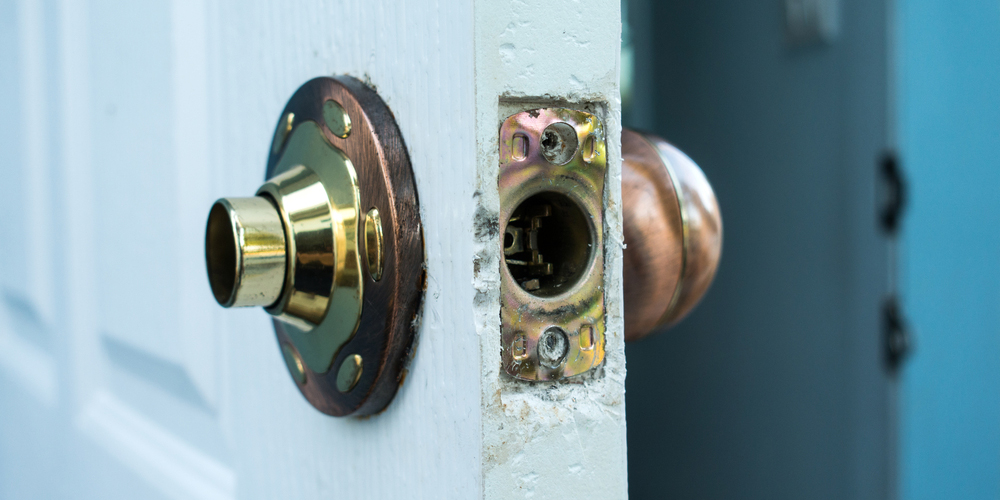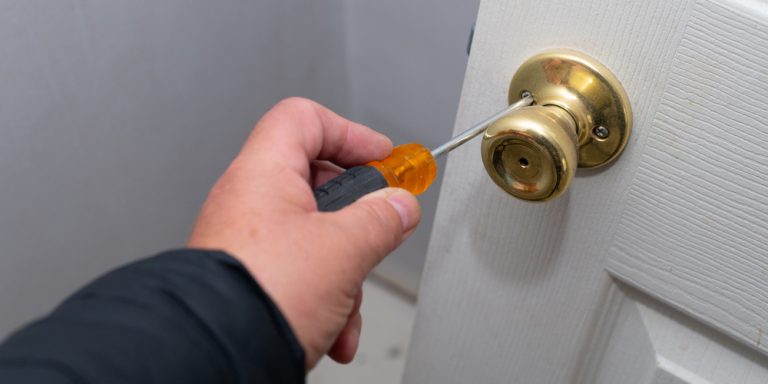Common Causes of Bathroom Door Lock Malfunction

A malfunctioning bathroom door lock can be a major inconvenience, causing frustration and even security concerns. It’s essential to understand the common causes of these issues to troubleshoot them effectively.
Types of Bathroom Door Locks and Their Common Failure Points
Different types of bathroom door locks have distinct failure points. Understanding these differences is crucial for effective troubleshooting.
- Lever Handles: These are common in modern homes. The most frequent failure point is the latch mechanism, which can become worn or misaligned. Additionally, the lever itself can become loose or break, leading to difficulty in opening or closing the door.
- Deadbolt Locks: These offer greater security but also have their own vulnerabilities. The common failure points include the deadbolt itself, which can become stuck or jammed, and the internal mechanism, which can wear out over time.
- Privacy Locks: These are typically found on bathroom doors and are designed to provide privacy. The most frequent failure point is the latch mechanism, which can become worn or misaligned. Additionally, the knob or lever can become loose or break, making it difficult to lock or unlock the door.
Consequences of a Malfunctioning Bathroom Door Lock
A malfunctioning bathroom door lock can have various consequences, ranging from minor inconvenience to serious security risks.
- Privacy Concerns: A faulty lock can compromise your privacy, making it difficult to secure the bathroom and potentially exposing you to unwanted intrusions.
- Safety Hazards: A broken lock can make it difficult to escape in case of an emergency, such as a fire or other unforeseen events. This can pose a serious safety risk, especially for individuals with mobility limitations or young children.
- Security Risks: A malfunctioning lock can leave your home vulnerable to theft or burglary. Intruders may exploit a weak or broken lock to gain unauthorized access to your property.
- Property Damage: Attempting to force open a broken lock can damage the door or frame, leading to costly repairs.
Common Bathroom Door Lock Problems, Causes, and Solutions
The following table summarizes some common bathroom door lock problems, their potential causes, and possible solutions:
| Problem | Cause | Solution |
|---|---|---|
| Door won’t lock | Worn or broken latch mechanism | Replace the latch mechanism |
| Door won’t unlock | Stuck or jammed deadbolt | Lubricate the deadbolt or replace it |
| Door knob is loose | Loose screws or worn-out knob | Tighten screws or replace the knob |
| Door handle is broken | Broken handle or worn-out internal mechanism | Replace the handle or the entire lockset |
| Key won’t turn | Worn-out key or keyhole | Replace the key or the entire lockset |
Troubleshooting Steps for a Non-Functional Bathroom Door Lock: Bathroom Door Lock Not Working

A malfunctioning bathroom door lock can be a frustrating inconvenience. Before calling a locksmith, it’s worth troubleshooting the issue yourself. You might be able to fix it with some simple steps.
Checking the Latch
The latch is the part of the lock that extends into the strike plate when the door is closed. A jammed latch is a common cause of a non-functional door lock. To check the latch, try pushing the door closed while holding the handle. If the latch engages but the door doesn’t close completely, the latch might be jammed.
- If the latch is jammed, you can try to free it by gently tapping the latch with a hammer or rubber mallet. Be careful not to damage the door or the lock.
- If the latch is bent or damaged, you may need to replace it.
Checking the Handle, Bathroom door lock not working
The handle is the part of the lock that you use to open and close the door. A loose or broken handle can prevent the lock from functioning properly. To check the handle, try moving it back and forth. If it feels loose or wobbly, the handle may need to be tightened or replaced.
- If the handle is loose, you can try tightening the screws that hold it in place.
- If the handle is broken, you will need to replace it.
Checking the Key Mechanism
The key mechanism is the part of the lock that allows you to unlock the door with a key. A worn-out key or a jammed key mechanism can prevent the lock from functioning properly. To check the key mechanism, try inserting the key and turning it. If the key doesn’t turn smoothly or if it feels stiff, the key mechanism may need to be cleaned or lubricated.
- If the key mechanism is jammed, you can try to free it by spraying it with a lubricant. Be careful not to get lubricant on the door or the lock.
- If the key is worn out, you will need to get a new one.
Repairing and Replacing a Faulty Bathroom Door Lock

When your bathroom door lock malfunctions, it can be frustrating and inconvenient. Fortunately, many common issues can be addressed with simple repairs or a replacement. This section will guide you through the process of repairing or replacing a faulty bathroom door lock, empowering you to regain control over your privacy and convenience.
Repairing Common Bathroom Door Lock Issues
Repairing a faulty bathroom door lock often involves addressing common issues like a broken latch, a worn-out strike plate, or a jammed mechanism. Before attempting any repairs, ensure you have the necessary tools and materials.
- A Phillips screwdriver: This is essential for removing screws and adjusting lock components.
- A flat-head screwdriver: Useful for prying open the lock cover or for adjusting the strike plate.
- A pair of pliers: For gripping and manipulating small parts.
- A lubricant: Such as WD-40, can help to loosen up a jammed mechanism.
- A small hammer: For tapping the latch or strike plate into position.
Replacing a Faulty Bathroom Door Lock
If repairs prove unsuccessful, replacing the entire lock is often the most practical solution. The process involves removing the old lock and installing a new one. Here’s what you need to know:
- Choosing the Right Replacement Lock: Consider the type of lock you need, such as a deadbolt, a privacy lock, or a combination lock. Ensure the new lock has the correct backset, which is the distance between the edge of the door and the center of the lock. Also, consider the finish of the lock to match your door hardware.
- Installing the New Lock: Carefully remove the old lock, paying attention to the screws and their placement. Align the new lock with the existing holes and secure it with the provided screws. Test the new lock to ensure it operates smoothly.
Resources for Replacement Parts and Professional Locksmith Services
Finding the right replacement parts or seeking professional locksmith services is easy. Here are some helpful resources:
- Home Improvement Stores: Stores like Home Depot and Lowe’s offer a wide range of door lock replacements and parts.
- Online Retailers: Amazon and other online retailers provide convenient access to a variety of locks and parts.
- Local Locksmiths: For more complex lock issues or installations, a professional locksmith can provide expert assistance.
Bathroom door lock not working – A broken bathroom door lock can be a real pain, especially when you’re in a hurry! But hey, maybe it’s time to think outside the box and consider a plastic door for bathroom. They’re surprisingly stylish and durable, and you can often find them with innovative locking mechanisms that might just solve your problem!
A broken bathroom door lock can be a real pain, especially when you’re in a hurry! But before you start tearing out the whole door, consider whether you need to replace the entire thing. If you’re looking to swap out the door, it’s helpful to know the standard bathroom door size , so you can find a perfect fit.
That way, you can get back to enjoying a working lock and a little privacy in your bathroom!